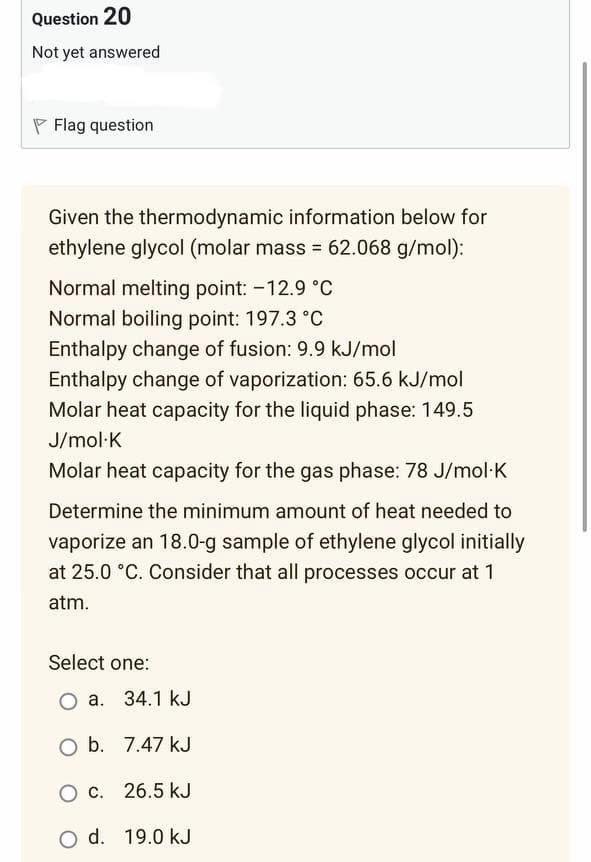Given the thermodynamic information below for ethylene glycol (molar mass = 62.068 g/mol): Normal melting point: -12.9 °C Normal boiling point: 197.3 °C Enthalpy change of fusion: 9.9 kJ/mol Enthalpy change of vaporization: 65.6 kJ/mol Molar heat capacity for the liquid phase: 149.5 J/mol K Molar heat capacity for the gas phase: 78 J/mol.K Determine the minimum amount of heat needed to vaporize an 18.0-g sample of ethylene glycol initially at 25.0 °C. Consider that all processes occur at 1 atm. Select one: a. h 34.1 kJ 747k1
States of Matter
The substance that constitutes everything in the universe is known as matter. Matter comprises atoms which in turn are composed of electrons, protons, and neutrons. Different atoms combine together to give rise to molecules that act as a foundation for all kinds of substances. There are five states of matter based on their energies of attraction, namely solid, liquid, gases, plasma, and BEC (Bose-Einstein condensates).
Chemical Reactions and Equations
When a chemical species is transformed into another chemical species it is said to have undergone a chemical reaction. It consists of breaking existing bonds and forming new bonds by changing the position of electrons. These reactions are best explained using a chemical equation.

Trending now
This is a popular solution!
Step by step
Solved in 3 steps with 3 images









